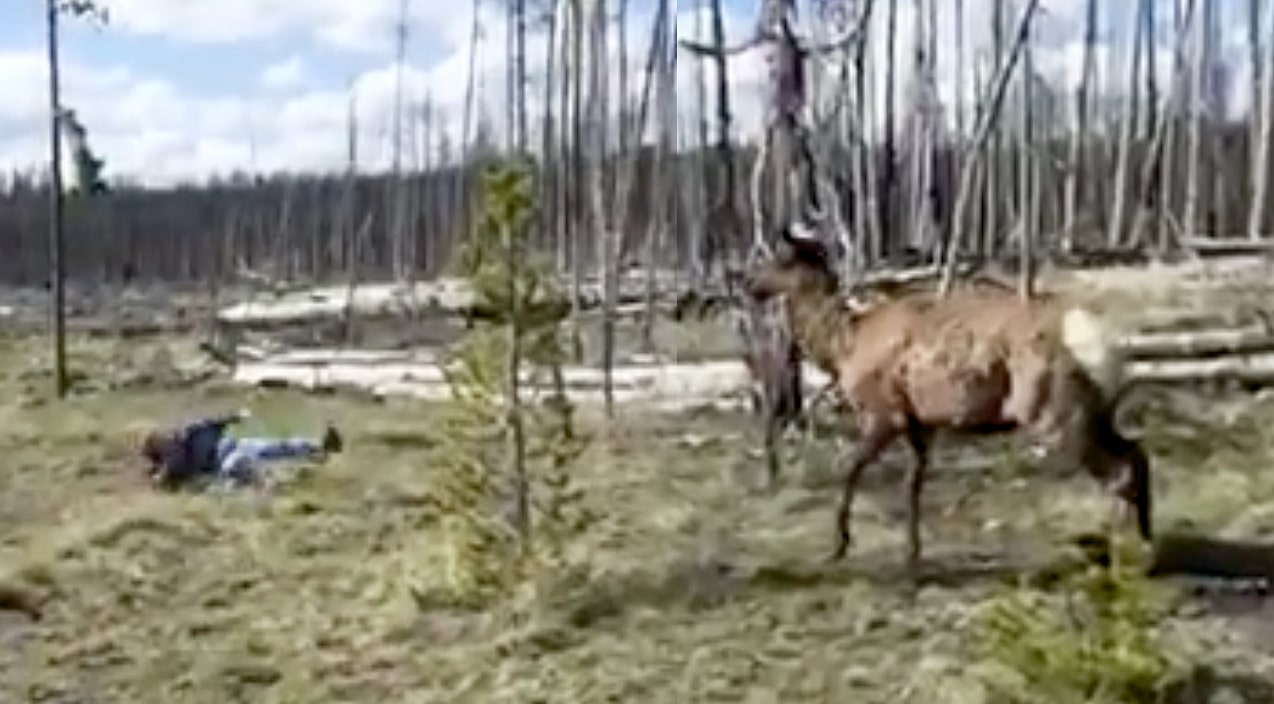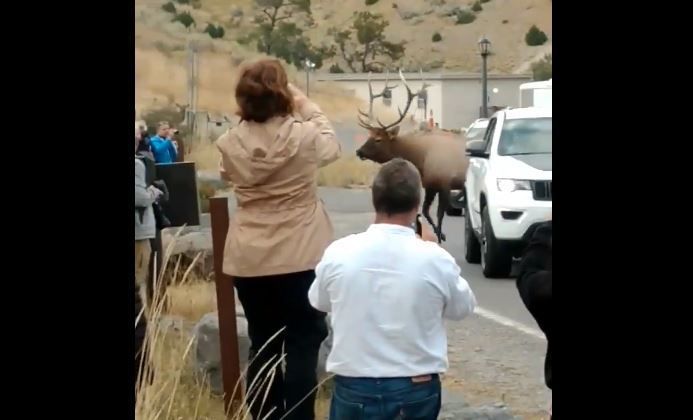

These animals are a vital part of the local habitat since they account for about 85% of wolf’s winter kills as well as many scavenger’s meals. Estimates suggest that the park’s grasslands provide a habitat for somewhere between 10,000 and 20,000 elk every year. Yellowstone National Park is a safe haven for elk. In January of this year, an elk punctured the tire on a tourist’s car after the tourist taunted the elk from inside the vehicle. The incident took place after two bull elk prepared to spar, but they were distracted by an approaching crowd, which caused one elk to bugle before charging the tourists. This warning comes just weeks after a bull elk charged a group of tourists in Yellowstone, knocking one tourist down. Look around corners before exiting buildings or walking around blind spots: cow elk may bed their calves near buildings and under cars.”

To avoid this possibility, park officials are encouraging visitors to be elk aware: “ Stay alert. But getting too close can agitate the elk, putting both humans and the animals at risk. The mammals are generally docile, and disinterested in humans, especially compared to big predators like grizzlies. Unfortunately, not all of those tourists heed the park’s numerous posted safety warnings, with many breaking the rules in search of a photo. May through the end of June, is elk calving season in the park, and also one of the most popular times for tourists to visit. “Always keep at least 25 yards from elk.” ” Cow elk are much more aggressive towards people during the calving season and may run toward you or kick,” the park noted in the bullet-pointed release. In news release on May 19 titled “DANGER: Elk calving season has begun in Yellowstone National Park,” officials warned tourists visiting the popular park to steer clear of mother and baby elk. Yellowstone has a simple message for visitors this summer: Do not go near the elk. Heading out the door? Read this article on the new Outside+ app available now on iOS devices for members!


 0 kommentar(er)
0 kommentar(er)
